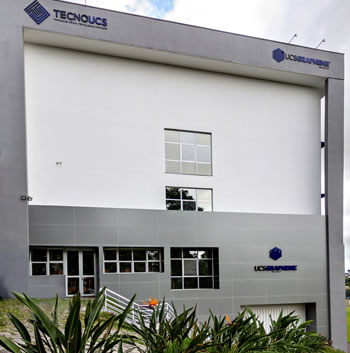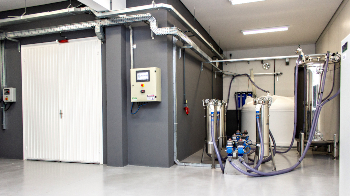Who we are
UCSGRAPHENE is the first and biggest plant of production of graphene on an industrial scale in Latin America installed by a university. In operation since March 2020, it brings together the expertise of the University of Caxias do Sul, conquered in 15 years of advanced research in nanomaterials, generating high-quality graphene to provide innovative technological services to future-bearing sectors.
The origin and insertion in the academic universe are key points of UCSGRAPHENE, ensured by a multidisciplinary team from the Science, Technology and Innovation Park- TecnoUCS and, also, by cooperation agreements with national and international universities to carry out research, projects, technological services and technical-scientific training.
Environmental Responsibility - In addition to the services of production, characterization and application of graphene and its derivatives and other nanomaterials, UCSGRAPHENE has a green plant, in which water and waste generated are reused and treated, and rain.water captured. In addition to innovation and an entrepreneurial spirit, this concept puts UCSGRAPHENE at the forefront of economic and social development in its area of activity.
Know more about Graphene
Graphene is one of the allotropic forms of carbon, as well as diamond, carbon and graphite, from which it originates, characterized by the hexagonal organization of atoms. It was first isolated in 2004 in England by scientists Andre K. Geim and Konstantin S. Novoselov, research that would win the Nobel Prize in Physics in 2010.
It is characterized by being a material of high transparency, light, malleable, resistant to impact and bending, excellent thermal and electrical conductor, among other properties.
Graphene is the lightest and strongest material in the world (200 times stronger than steel), beating even diamond. A 1 square meter graphene sheet weighs 0.0077 grams and is capable of supporting up to 4 kg.



Also, it is the finest material that exists (the thickness of an atom, or 1 million times finer than a strand of hair).
Because it is a disruptive technology, graphene tends to compete with existing technologies and to replace materials with decades of use. Its applications allow the development of products with high mechanical resistance, data transmission capacity and energy saving.
As a highly engineered material, graphene is one of the main resources today in nanotechnology, being used in the production of LCD screens and displays, touchscreens, electronic components with very high capacity for data storage and processing, rechargeable batteries, among others.